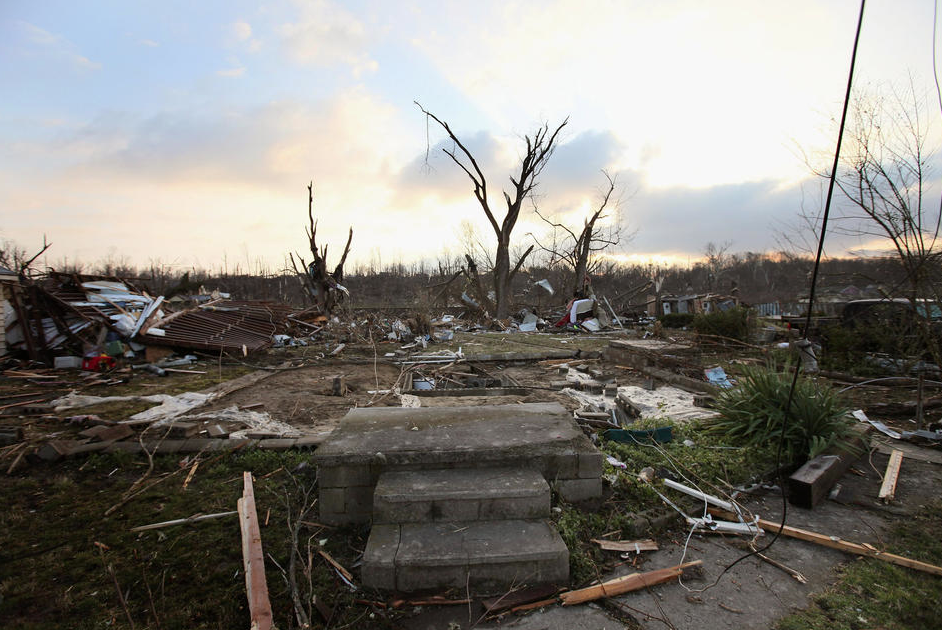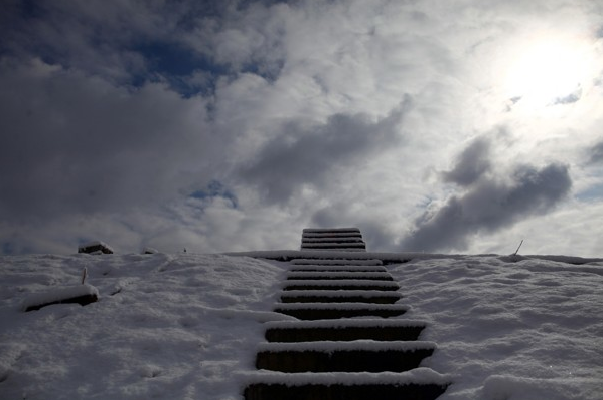In U.S. culture at least, the homestead is a valued possession, in many ways a marker of citizenship, but more perhaps an indication of one’s roots in a community. And so it is, that when we face a wave of tornadoes, as we just did in the South and the Midwest, the conventional outpouring of photographs testify not just to the seemingly random and arational forces of nature or to the ways in which communities seem to emerge spontaneously to help one another, but also to what counts as loss. And at the top of that list is the home.
Some such pictures are horrifying, as when a house has been literally upended and sits on its roof, and others are simply stupefying, as when we see half of a house thoroughly obliterated and the remainder in pristine condition with books still sitting on the shelf or cupcakes carefully ordered in anticipation of a child’s birthday party. But most poignant, I think, are the photographs that focus our attention on front stoops and foundations, the remnants of a domicile that are simultaneously absent and present.
The photograph above is an example of what I have in mind. I have no idea what the house that sat there looked like. It was no doubt small, but nevertheless substantial, and the cement stoop implies that whoever built it intended for it to last. That the tornado could destroy everything but the stoop is an indication of its power, to be sure, but in its own way it is also an indication of its weakness and limitations. It could obliterate that which stood in its way, but it could not remove the foundations which remain perhaps to be built upon once again. And because the foundation remains, one can imagine what the landscape might look like in another year or so when the debris has been removed and a new house has been erected
Photographs, of course, are a record of the past. In their own way they are an archive of death, of things that once were and are no more. And this is so, no less of a happy family snapshot than of images of violence and disaster—whether natural or manmade. And when we treat them as only markers of a dead past they can range from being be richly painful to anesthetizing to melancholic. But when we look at them closely, proactively, they can be a prod to imagine a different future, less markers of death than of the possibility of rejuvenation and rebirth.
I think maybe that is why I find the photograph below so enticing. Perhaps not a stairway to heaven, but at least a reminder that however subject we are to the whims of nature and other forces beyond our control there is always at least the possibility of an optimistic future just beyond our sight. And in any case, if we don’t look for it, if we don’t try to imagine it, it is likely that we will never achieve it.
Photo Credits: Scott Olsen/Getty; Eric Thayer/Reuters.
Cross-posted at BAGnewsNotes.


Discussion